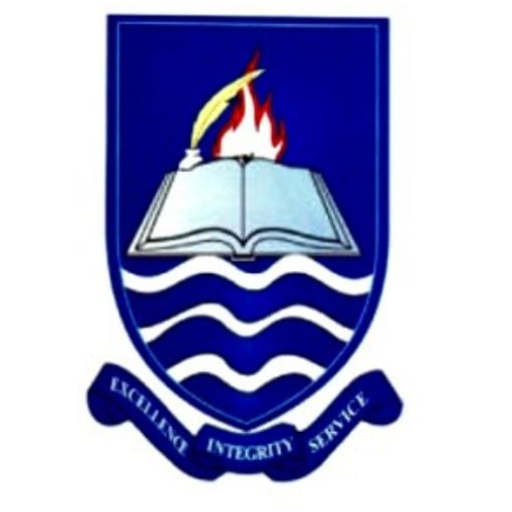Multiple Representations as Tools for Enhancing Students’ Critical Thinking and Attitudes Towards Physics
DOI:
https://doi.org/10.63561/fnas-jmse.v6i4.906Keywords:
Attitude, Critical Thinking Abilities, Multiple Representations, Physics Concepts, StudentsAbstract
Especially when it comes to challenging physics subjects, the use of different representations has the potential to improve students' comprehension and meet the demands of a varied student body. This study investigates how different representations affect students' attitudes toward physics and their capacity for critical thought. Forty public senior secondary school II physics students (11th grade equivalent) make up the sample, which was drawn from two intact classes of two public senior secondary schools that were randomly chosen from public senior secondary schools in Education District V, Lagos State, South-West Nigeria, using a quasi-experimental pre-test and post-test design.The students were 15 years old on average. The Questionnaire on Students Attitude towards Physics (QOSATP) and the Physics Critical Thinking Test (PCTT) were the two tools used in the study. The instruments' reliability coefficients, as determined by the test-retest technique of analysis, were 0.82 and 0.73, respectively. The research issues were addressed using descriptive statistics (mean and standard deviation), whereas the null hypotheses were tested using inferential statistics (ANCOVA) at the.05 level of significance. The findings demonstrated a statistically significant difference between students taught physics with multiple representation [MR] and those taught using the lecture method in terms of their critical thinking skills [F (1,37) = k97.66; p<.05] and those taught physics with multiple representation [MR] and those taught using the lecture method in terms of their attitude scores [F (1,37) = 7.00, p >.05]. Multiple representations improved students' critical thinking skills and attitude toward physics, according to the study's limitations. Among other things, it was suggested that physics instructors use this method when instructing physics in senior high schools.
References
Abdulhamid, A. (2013). Effects of teaching methods on retention of agricultural science knowledge in senior secondary schools of Bauchi local government area, Nigeria. International Journal of Science and Technology, 4(4), 63–69.
Abrami, P. C., Bernard, R. M., Borokhovski, E., Waddington, D. I., Wade, C. A., & Persson, T. (2015). Strategies for teaching students to think critically: A meta-analysis. Review of Educational Research, 85(2), 275–314.
Achor, E. E., Jack, G. U., & Uzomah, T. N. (2024). Enhancing students’ critical thinking in physics using graphic organizer enhanced and context-based learning strategies. Journal of Research in Science and Mathematics Education (J-RSME), 3(1), 1–20.
Ahove, M. A. (2020). 21st century skill. Africa Centre for Innovative and Transformative STEM Education (LASU ACEITSE).
Ainsworth, S. (2006). DeFT: A conceptual framework for considering learning with multiple representations. Learning and Instruction, 16(3), 183–198.
Akpur, U. (2020). Critical, reflective, creative thinking and their reflections on academic achievement. Thinking Skills and Creativity, 37, 100683. https://doi.org/10.1016/j.tsc.2020.100683
Anna, B., Tarasenko, K. V., Polyezhayev, Y., Matsegora, I. L., & Rukolyanska, N. (2024). Multimedia resources as a factor of increasing students' motivation in learning foreign languages. Conhecimento & Diversidade, 16(41), 546–567. https://doi.org/10.18316/rcd.v16i41.11545
Bandura, A. (1977). Social learning theory. Prentice-Hall.
Bawan, A. M., Kamgba, F. A., & Obi, D. O. (2024). Refocusing the teaching of physics for the technological development of Nigeria. British Journal of Education, Learning and Development Psychology, 7(3), 14–20. https://doi.org/10.52589/bjeldp-raj4ekc5
Brookfield, S. (2012). Teaching for critical thinking: Tools and techniques to help students question their assumptions. Jossey-Bass.
Browne, M., & Keeley, S. (2010). Asking the right questions: A guide to critical thinking (9th ed.). Pearson.
Carlos, I. C. (2020). Superstrings and other things: A guide to physics.
Chang, C. K., & Tseng, K. H. (2013). The effects of dynamic computer-based simulations on physics problem solving. Educational Technology & Society, 16(4), 115–127.
Chen, J. C., Huang, Y., Lin, K. Y., Chang, Y. S., Lin, H. C., Lin, C. Y., & Hsiao, H. S. (2020). Developing a hands-on activity using virtual reality to help students learn by doing. Journal of Computer Assisted Learning, 36(1), 46–60.
De Cock, M. (2012). Representation use and strategy choice in physics problem solving. Physical Review Special Topics Physics Education Research, 8(2), 020117.
Dewati, M., Suparmi, A., Sunarno, W., Sukarmin, & Cari, C. (2019a). Preservice teachers’ concept understanding profile about DC circuit based on multiple representation. AIP Conference Proceedings, 2202, 020064. https://doi.org/10.1063/1.5141674
Dewati, M., Suparmi, A., Sunarno, W., Sukarmin, S., & Cari, C. (2019b). Implementasi multiple representation pada rangkaian listrik DC sebagai upaya meningkatkan problem solving skills. Prosiding SNFA (Seminar Nasional Fisika dan Aplikasinya), 4, 140.
Dumcho, W., & Tshomo, S. (2023). Exploring students’ perceived difficulties of learning physics. Освіта, інноватика, практика, 6. https://doi.org/10.17102/eip.6.2023.03
Fauziah, R. N., & Raisal, A. Y. (2022). Development of multiple representation-based e-modules to improve abstract thinking skills in physics of high school students. Journal Pendidikan Fisika, 11, 122–127. Federal Government of Nigeria. (2013). National policy on education. NERDC Press.
Grossman, H. M., & Layne, C. M. (2018). Using heuristic tools to improve critical thinking in a problem-based learning curriculum. In 41st Annual Proceedings (Vol. 2, pp. 270–277).
Hung, C., & Wu, H. (2018). Tenth graders’ problem-solving performance, self-efficacy, and perceptions of physics problems with different representational formats. Physical Review Physics Education Research, 14(2).
Ibrahim, N., Zakiang, M. A., & Damio, S. M. (2019). Attitude in learning physics among form four students. Social and Management Research Journal, 16(2), 21–42.
Ishrat, A., Malik, R., Baba, S. H., Bhat, B. A., Tariq, S. T. A, Rather, M. A., & Islam, T. (2020). Socio-economic correlates of attitude of youth of fishing communities towards fishing occupation in Kashmir Valley. International Journal of Current Microbiology and Applied Sciences, 9(10), 172–178. https://doi.org/10.20546/ijcmas.2020.910.022
Jatmiko B., Kurnia, B., Hanandita, V., Saphira, V., & Siswanto, J. (2024). Investigation-based multiple representation online model to students’ problem-solving skills. Perspektivy Nauki i Obrazovaniâ, 69(3), 621–636. https://doi.org/10.32744/pse.2024.3.38 Jolanta, B., Dunne, P. J., Meehan, T., O'Boyle, C. A., & van Nieuwerburgh, C. (2022). Positive health. Routledge. https://doi.org/10.4324/9781003279594
Kanyesigye, S. T., Uwamahoro, J., & Kemeza, I. (2022). Effect of problem-based learning on students’ attitude towards learning physics: A cohort study. F1000Research, 11. https://doi.org/10.12688/F1000Research.123456.1
Kaufman, D. B. (2020). Effects of interactive visualizations on high school students’ problem-solving abilities in physics. Physics Education Research, 15(2), 34–45.
Khalili, P. (2016). Mathematical needs in the physics classroom.
Kohl, P. B., Rosengrant, D., & Finkelstein, N. D. (2007). Strongly and weakly directed approaches to teaching multiple representation use in physics. Physical Review Special Topics—Physics Education Research, 3(1), 010108.
Kristina, D., & Uddling, J. (2022). Signs of learning: Multiple modes as support for interaction in a linguistically diverse physics classroom. Education Sciences, 12(10), 662. https://doi.org/10.3390/educsci12100662
Laras, W., Siswoyo, & Fauzi, B. (2015). Pendekatan multi representasi. Jurnal Penelitian & Pengembangan Pendidikan Fisika, 1(1), 31–38.
Li, M. (2020). Multimodal pedagogy in TESOL teacher education: Students’ perspectives. System, 94, 102337.
Liana, M., Sinaga, P., & Emiliannur, E. (2023). Physics workbook using multimodal representation on simple harmonic motion topic. Jurnal Penelitian Pendidikan IPA, 9(9), 7503–7513.
Marshall, D., & Conana, H. (2022). Multimodality and new materialism in science learning: Exploring insights from an introductory physics lesson. Education as Change, 25, 1–19. https://doi.org/10.25159/1947-9417/8848
Masrifah, A., Agus, S., Parlindungan, S., & Wawan, S. (2020). An investigation of physics teachers’ multiple representation ability on Newton’s law concept. Jurnal Penelitian dan Pengembangan Pendidikan Fisika, 6(1).
Mayer, R. E. (2007). Thinking, problem solving, cognition (2nd ed.). Freeman.
Mayer, R. E. (2009). Multimedia learning (2nd ed.). Cambridge University Press.
Merta, S., Parlindungan, S., & Utari, S. (2022). Effect of application of physics learning material using multimode representation to improve problem-solving ability. https://doi.org/10.2991/ICMSED-16.2017.33
Muhammad, I., Zaenati, L., Farida, N., & Than, K. W. (2023). The influence of student attitudes on learning achievement. https://doi.org/10.22437/jiituj.v7i2.26697
Munfaridah, N., Avraamidou, L., & Goedhart, M. (2021). The use of multiple representations in undergraduate physics education: What do we know and where do we go from here? Eurasia Journal of Mathematics, Science and Technology Education, 17(1), em1934.
Nickerson, R. S., Perkins, D. N., & Smith, E. E. (2014). The teaching of thinking. Routledge.
Nigerian Educational Research Development Council (NERDC). (2009). Secondary school physics curriculum. NERDC Press.
Ogunleye, A. O., & Baba, T. A. (2011). Effects of computer simulations on secondary school students’ attitudes toward physics. International Journal of Education in Science and Technology, 13(2), 112–119. Ogunleye, O. O. (2014). The decline of enthusiasm in science among secondary school pupils. European Journal of Educational Sciences, 3(1), 37–40.
O'Halloran, K. L., Tan, S., & E, M. K. (2017). Multimodal analysis for critical thinking. Learning, Media and Technology, 42(2), 147–170.
Opfermann, M., Schmeck, A., & Fischer, H. (2017). Multiple representations in physics and science education. Why should we use them? In Multiple representations in physics education (pp. 1–22). Springer. https://doi.org/10.1007/978-3-319-58914-5_1
Orulebaja, Y., Owolabi, T., & Akintoye, H. (2021). Effects of multiple representations and problem-solving learning strategies on physics students’ problem-solving abilities. International Journal for Innovation Education and Research, 9(4).
Palanisamy, S. (2020). Effectiveness of Mayer’s problem solving model with visual representation teaching strategy in enhancing year four pupils’ mathematical solving ability (Master’s thesis, University of Malaya).
Pascasie, N., Minani, E., & Nduwingoma, M. I. K. (2022). A scientometric review of multimedia in teaching and learning of physics. LUMAT, 10(1). https://doi.org/10.31129/lumat.10.1.1634
Philippe, S., Souchet, A. D., Lameras, P., Petridis, P., Caporal, J., Coldeboeuf, G., & Duzan, H. (2020). Multimodal teaching, learning and training in virtual reality: A review and case study. Virtual Reality & Intelligent Hardware, 2(5), 421–442.
Pongprapan, P. (2024). Unpacking the factors that influence secondary students’ attitudes towards physics in nine different countries—A cross-cultural analysis. Physics Education, 59(5), 055006. https://doi.org/10.1088/1361-6552/ad5f6e
Pozhham, P., Godarzi, K., & Roozbehani, M. (2019). Investigating the relationship between critical thinking and academic achievement among male students. International Journal of Philosophy and Social Psychological Sciences, 5(3), 9–17.
Rau, M. A. (2017). Conditions for the effectiveness of multiple visual representations in enhancing STEM learning. Educational Psychology Review, 29, 717–761.
Reima, A. J. (2024). Multimodal teaching and learning in the EFL college classroom. Journal of English Language Teaching and Applied Linguistics, 6(4), 68–75. https://doi.org/10.32996/jeltal.2024.6.4.7
Samba, R. M., Achor, E. E., Bash, A. E., & Iortim, S. O. (2020). Fostering students’ critical thinking and achievement in basic science using graphic organizer and experiential learning strategies with feedback. Science Education International, 31(2), 220–225. https://doi.org/10.33828/sei.v31.i2.12
Suryawati, E., & Osman, K. (2017). Contextual learning: Innovative approach towards the development of students’ scientific attitude and natural science performance. Eurasia Journal of Mathematics, Science and Technology Education, 14(1), 61–76.
Telima, A. (2019). Why students in secondary schools choose not to do physics? Implications for policy and practice in developing countries. European Scientific Journal, 15(34), 103. https://doi.org/10.19044/ESJ.2019.V15N34P103
Treagust, D., Won, M., & McLure, F. (2018). Multiple representations and students’ conceptual change (pp. 121–128). Routledge. https://doi.org/10.4324/97813546739
Tsania, N. D., Sutopo, S., Handayanto, K., & Kusairi, S. (2024). Demographic factors associated with students' belief and attitude towards physics and learning: A cross-sectional study from Indonesia. Participatory Educational Research, 11(6), 75–93. https://doi.org/10.17275/per.24.80.11.6
Vygotsky, L. (1978). Mind in society: The development of higher psychological processes. Harvard University Press.
Wankat, P. C., & Oreovicz, F. S. (2015). Teaching engineering. Purdue University Press. Wenzhong, G., Jianwen, W., & Shiping, W. (2019). Deep multimodal representation learning: A survey. IEEE Access, 7, 63373–63394. https://doi.org/10.1109/ACCESS.2019.2916887
West Africa Examination Council. (2014). Chief examiners’ report: General comment, weakness/remedies and candidate's strength. Retrieved June 10, 2019, from https://waeconline.org.ng/elearning/Biology/Bio223mc.html
West Africa Examination Council. (2016). Chief examiners’ report: General comment, weakness/remedies and candidate's strength. Retrieved June 10, 2019, from https://waeconline.org.ng/elearning/Biology/Bio225mc.html
West African Examinations Council. (2015). Regulation and syllabus for West African Senior Secondary School Certificate Examination (WASCE).
Winda, M., Mitri, I., & Maimurni, M. (2019). Applying multirepresentation-based physics learning to improve the ability of representation of students in class X MIPA2 SMAB Abussalam Pekanbaru. Jurnal Guru Sekolah, 6(2), 67–74. https://doi.org/10.31258/JGS.6.2.67-74
Yanxiang, G., Juan, G., & Xiangli, S. (2024). The cultivation of critical thinking ability in middle school physics teaching. Deleted Journal, 7(3), 1–3. https://doi.org/10.54097/nqd48z70
Zheng, B., & Warschauer, M. (2015). The impact of multimedia learning on secondary students’ attitudes toward physics. Journal of Educational Technology Development and Exchange, 8(2), 79–91.







